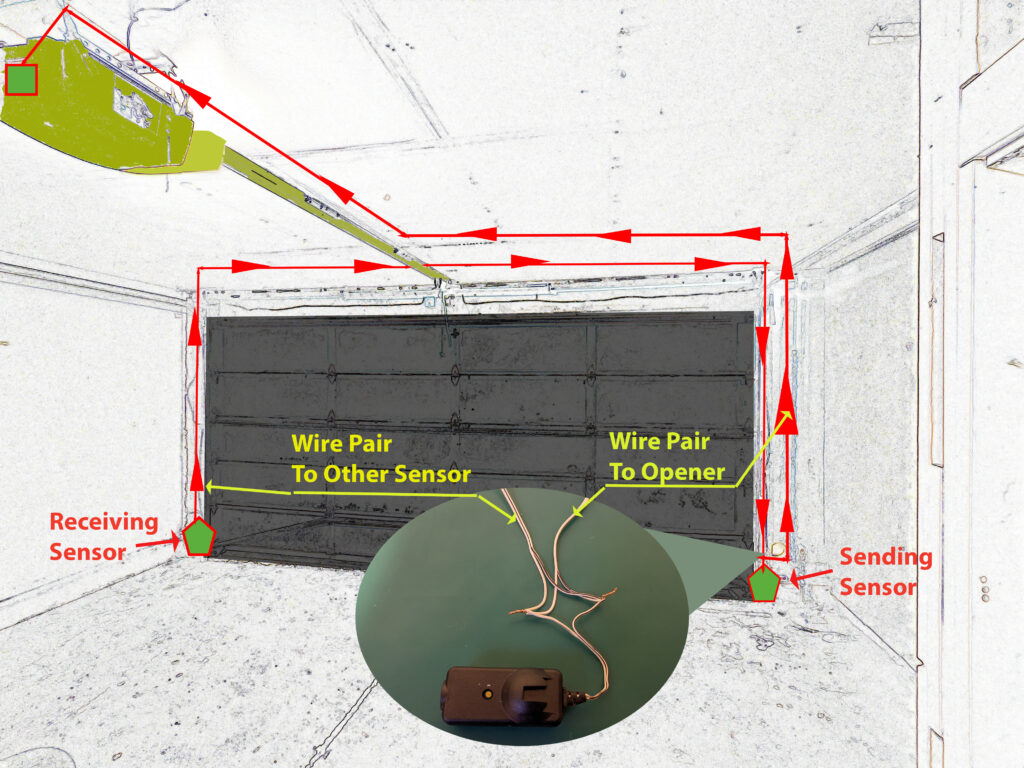The Daisy Chain wiring configuration is most common in homes that have been pre-wired during construction. Rather than a direct line from each sensor back to the motor, they are connected in a row.
If one of the safety sensors has two wires tails coming out of the wall, and there are two wires popping out of the ceiling (one for the sensors and one that leads to the wall control), you are dealing with daisy chain wiring.

This means that a problem with the splice one one side of the door can affect the sensor on the other side. Lots of people see a sensor with no lights on and assume it has either gone bad or there is a problem with the splice on THAT side. It could just as easily be the splice on the OTHER side.
Always start troubleshooting this configuration on the side with the wire that leads back to the opener. The far side will not be live until the pre-wires are joined with each other, and are receiving power from the wire leading back to the opener.
This is where the major flaw with older LiftMaster/Chamberlain/Craftsman safety sensors really matters. If you can do it without causing “cross talk” with the eyes on an adjacent door, it is best to make the sender the closest one to the opener (as in the picture above). I have a detailed explanation that will be worth the read if you are struggling to get your Chamberlain safety sensors to light up.
Back at the opener, you will only find one wire for both sensors because they are already paired (see pic above). This is convenient if you are dealing with a thicker type of wiring, like thermostat wire, because it will fit the wiring terminal (where it would be too thick as a pair, requiring a smaller wire to be splice in).